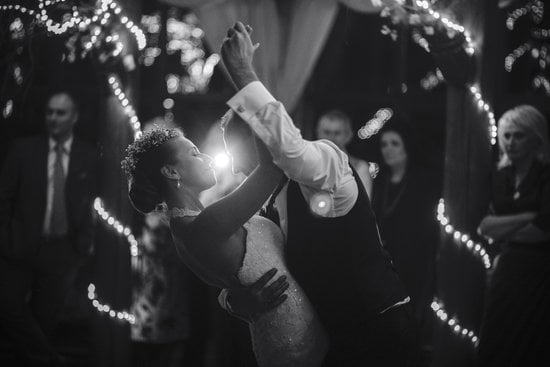Wedding invitations play a crucial role in not only informing guests about the upcoming event but also in setting the tone and style for the entire celebration. They serve as the first glimpse into what attendees can expect, from the formality of the affair to the overall aesthetic. In this article, we will delve into the significance of wedding invitations and provide insight into how they are written, addressing both traditional etiquette and modern trends.
When it comes to planning a wedding, every detail counts, and wedding invitations are no exception. Not only do they convey essential information such as date, time, and location, but they also reflect the couple’s personality and style. From traditional formats to modern trends, there are various aspects to consider when crafting the perfect wedding invitation.
In the following sections, we will explore traditional wedding invitation etiquette, modern trends in design and wording, essential information to include in invitations, phrasing and wording tips, guidelines for addressing and sending out invitations, common mistakes to avoid when writing them, as well as techniques for making a lasting impression with these crucial pieces of stationery. Whether you’re looking to follow timeless traditions or embrace contemporary styles, this article will provide valuable insights into creating unforgettable wedding invitations.
Traditional Wedding Invitation Etiquette
When it comes to traditional wedding invitation etiquette, there are certain formats and wordings that have been followed for generations. These guidelines not only add a touch of elegance to your invitations but also ensure that you convey the necessary information to your guests in a clear and respectful manner.
Here are some key traditional wedding invitation etiquette tips to keep in mind:
- Format: Traditionally, wedding invitations are formatted with the hosts’ names at the top, followed by a request line, the couple’s names, date and time, location, and RSVP details.
- Wording: The wording of traditional wedding invitations typically follows a formal tone, using phrases such as “request the honor of your presence” for a church ceremony or “request the pleasure of your company” for a non-religious venue.
- Addressing Guests: When addressing guests on the envelope and inner envelope (if applicable), it is important to use proper titles and last names, especially for formal events.
It is essential to follow these traditional guidelines not only to uphold etiquette but also to show respect for the formality of the occasion. However, there is still room for personalization within these conventions. Couples can choose different fonts, colors, and embellishments that reflect their unique style while still adhering to traditional formatting and wording.
Ultimately, following traditional wedding invitation etiquette sets the tone for your event and demonstrates thoughtful consideration for your guests. It ensures that they receive all necessary information in a clear and respectful manner while adding a touch of timeless elegance to your special day.
Modern Trends in Wedding Invitations
As weddings continue to evolve with changing times, so do the trends in wedding invitations. Modern couples are now opting for non-traditional styles, designs, and materials when it comes to their wedding invitations. One of the most popular modern trends is the use of digital invitations.
With the advancement of technology, many couples are choosing to send out electronic invitations via email or through social media platforms. This not only saves on paper but also allows for creative and interactive designs that can be personalized to reflect the couple’s unique style.
Another contemporary trend in wedding invitations is the emphasis on eco-friendly options. With sustainability becoming a growing concern, many couples are opting for environmentally conscious materials such as recycled paper, plantable seed paper, or even reusable fabric invitations. These eco-friendly choices not only showcase the couple’s commitment to being environmentally responsible but also add a unique and personal touch to their invitations.
Furthermore, modern trends in wedding invitations also include unique materials and unconventional designs. Couples are now experimenting with unconventional materials such as wood, acrylic, or even metal for their wedding invitations.
These materials not only add a luxurious and distinctive element to the invitations but also serve as keepsakes for guests to cherish long after the wedding day. Additionally, non-traditional shapes, bold colors, and intricate detailing are becoming more prevalent in modern wedding invitation designs, allowing couples to truly personalize their invites according to their individuality and preferences.
The shift towards modern trends in wedding invitations reflects how couples today are seeking innovative ways to make a statement and set the tone for their special day. From digital invites to eco-friendly options and unique materials, these modern trends offer limitless possibilities for couples looking to make a memorable impression with their wedding invitations.
Regardless of the choice of design or style, what remains constant is that wedding invitations serve as a reflection of the couple’s love story and an exciting prelude to their joyous celebration.
Essential Information to Include in Wedding Invitations
When it comes to wedding invitations, including essential information is crucial to ensure that guests have all the details they need to attend the celebration. The primary purpose of a wedding invitation is to inform guests about the date, time, and location of the wedding ceremony and reception. Additionally, there are other important details that should be included to provide clarity and guidance for your guests.
First and foremost, the names of the bride and groom should be prominently displayed on the wedding invitation. This not only announces the couple’s union but also sets the tone for the formality or informality of the event. Including the full names of both individuals is standard practice, allowing guests to clearly identify who is getting married.
In addition to the names of the couple, it’s essential to include the date and time of both the wedding ceremony and reception. Guests need this information well in advance to make arrangements and plan their attendance. Providing a clear timeline for each portion of the event ensures that everyone knows what to expect on the big day.
Finally, it’s important to include RSVP details in wedding invitations. Whether it’s an email address, phone number, or physical reply card, including instructions on how guests can confirm their attendance is crucial for logistical planning. Knowing how many people will be present allows couples to finalize catering arrangements and seating plans efficiently.
| Information | Details |
|---|---|
| Bride & Groom Names | Full names of both individuals |
| Date & Time | For both ceremony and reception |
| RSVP Details | Contact information or reply card instructions |
Phrasing and Wording for Wedding Invitations
When it comes to creating wedding invitations, the phrasing and wording play a crucial role in conveying the tone and setting the right expectations for the event. The wording of a wedding invitation should reflect the couple’s style, formality of the event, and provide clear information to the guests. Here’s how are wedding invitations written when it comes to phrasing and wording:
Personalized Wording
Personalizing wedding invitations not only adds a unique touch but also allows couples to express their personality and style. Whether it’s using humor, poetry, or traditional formal language, the wording should resonate with the couple and reflect their relationship.
Clarity and Details
It is essential to include all pertinent details such as the names of the hosts, couple’s names, date, time, and location of the ceremony and reception. Be sure to double-check all information for accuracy before printing or sending out digital invites.
Tone and Style
The tone of the wedding invitation should match the overall vibe of the event. For formal weddings, traditional language is typically used. Meanwhile, casual events may opt for a more relaxed and informal wording.
By carefully considering these aspects when crafting wedding invitations, couples can ensure that their invitations effectively communicate important details while remaining true to their personal style. In doing so, they set a positive tone that will leave an impression on guests from their first interaction with the upcoming celebration.
Addressing and Sending Wedding Invitations
Guidelines for Addressing Wedding Invitations
When it comes to addressing wedding invitations, proper etiquette plays a significant role. The outer envelope should be addressed formally, using titles and full names. It’s important to make sure that all names are spelled correctly and that the addresses are accurate.
For married couples, the husband’s name typically comes first, followed by the wife’s name (e.g. Mr. and Mrs. John Smith). If the couple is unmarried but living together, their names should appear on separate lines.
For guests with professional titles or special honors, such as doctors or military officers, these titles should be included when addressing the envelopes. Additionally, when sending invitations to families with children under 18, their names should be listed below those of their parents under “and Family” (e.g. Mr. and Mrs. John Smith and Family).
Sending Out Wedding Invitations
The timeline for mailing wedding invitations is crucial in ensuring that guests have enough time to RSVP and make any necessary arrangements. Traditionally, wedding invitations are sent out 6-8 weeks before the wedding date to give guests ample time to respond.
For destination weddings or if many guests will need to travel a great distance, consider sending out save-the-date cards up to six months in advance and then following up with formal invitations at least three months before the big day.
In today’s digital age, many couples also choose to send digital invitations via email or through wedding websites. While this can be a convenient option, it’s essential to ensure that all necessary details are clearly communicated in these digital invites.
RSVPs and Follow-Up
Along with sending out the wedding invitations, couples should include RSVP cards for guests to fill out and return by a specified date. This allows for better planning regarding seating arrangements, catering, and other logistical considerations for the event. It’s also helpful for couples to follow up with any guests who have not responded by the deadline in order to finalize guest counts and accommodations.
Common Mistakes to Avoid When Writing Wedding Invitations
When it comes to writing wedding invitations, there are several common mistakes that couples should avoid in order to ensure that their invitations are clear, organized, and reflective of their special day. Avoiding these mistakes will help maintain the professionalism of the event and prevent confusion for guests.
Some common mistakes to avoid when writing wedding invitations include:
- Spelling and grammatical errors: It is essential to thoroughly proofread and edit the content of the wedding invitations before sending them out. Spelling or grammatical errors can detract from the elegance of the invitation and create a negative impression.
- Unclear or missing information: Failing to include vital details such as the date, time, and location of the wedding can lead to confusion among guests. It’s crucial to ensure that all necessary information is clearly provided in the invitation.
- Inconsistent wording or formatting: Maintaining consistency in terms of wording and formatting throughout the invitation suite is important for creating a cohesive and polished look. Inconsistencies can make the invitations appear unprofessional.
Additionally, it’s important for couples to consider cultural or religious sensitivities when addressing their invitations, as well as ensuring that they are sent out with ample time for guests to RSVP. By avoiding these common mistakes, couples can effectively communicate all essential information while creating a positive and lasting impression on their guests.
Overall, by paying attention to detail and carefully crafting their wedding invitations, couples can set the tone for their special day and create anticipation among their guests. By understanding traditional etiquette while also embracing modern trends, couples can strike a balance between timeless elegance and personal style. Ultimately, well-written wedding invitations play a significant role in shaping the overall guest experience from the moment they receive their invitation until they witness the couple exchange vows on their big day.
Conclusion
In conclusion, wedding invitations play a crucial role in not only inviting guests to the celebration but also in setting the tone and theme for the entire event. The design, wording, and overall presentation of wedding invitations can make a lasting impression on recipients and give them a glimpse into the couple’s style and personality. Whether following traditional etiquette or embracing modern trends, it is essential to ensure that wedding invitations are well-written, clear, and informative.
When considering how are wedding invitations written, it is important to remember that the phrasing and wording should be personalized to reflect the couple’s unique love story. Modern trends in wedding invitations offer a wide range of options, from digital invites to eco-friendly materials, allowing couples to express their individuality. The inclusion of essential information such as venue details, RSVP instructions, and dress code ensures that guests have all the necessary information at their fingertips.
Addressing common mistakes when writing wedding invitations is crucial in ensuring that the final product is flawless. Proofreading and editing play a vital role in eliminating errors and ensuring that the invitations convey the desired message effectively. By paying attention to these details and by making an effort to craft thoughtfully written wedding invitations, couples can leave a lasting impression on their guests and enhance the overall experience of their special day.
Frequently Asked Questions
What Is the Proper Way to Write Wedding Invitations?
The proper way to write wedding invitations is to include essential information like the names of the hosts, couple, date, time, and venue. It’s important to use formal language and spell out words like “street” or “road.”
How Do You Write a Marriage Invitation?
When writing a marriage invitation, it’s crucial to start with a warm and inviting tone. Include details such as the date and time of the ceremony, location, and any other pertinent information such as reception details.
How Are Wedding Invitations Worded?
Wedding invitations are typically worded formally using third person language. They should include the names of those hosting the wedding, the couple getting married, date and time of the event, and the location. Additionally, RSVP details are often included for guests’ responses.

I have been involved in marriages for over 20 years helping couples and singles understand more about them.





